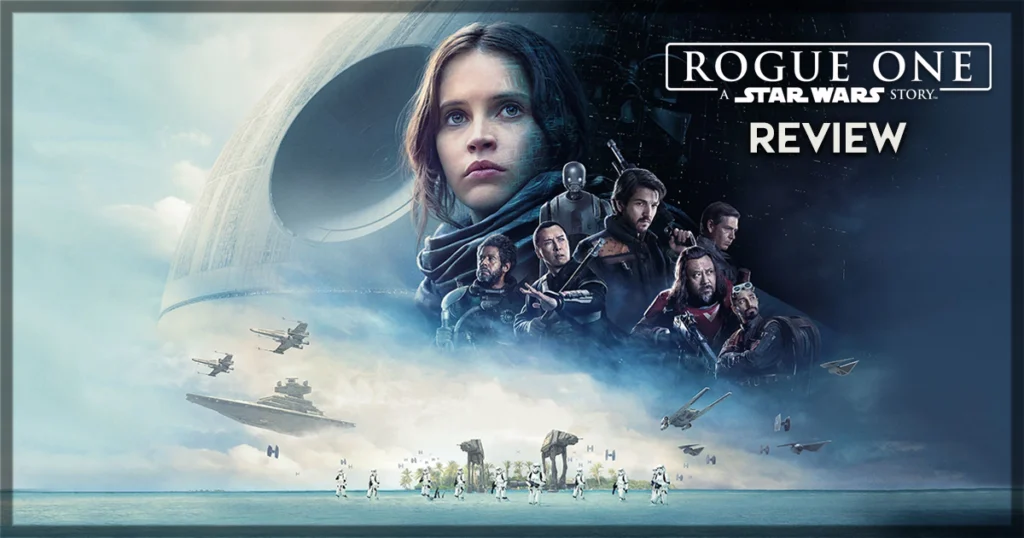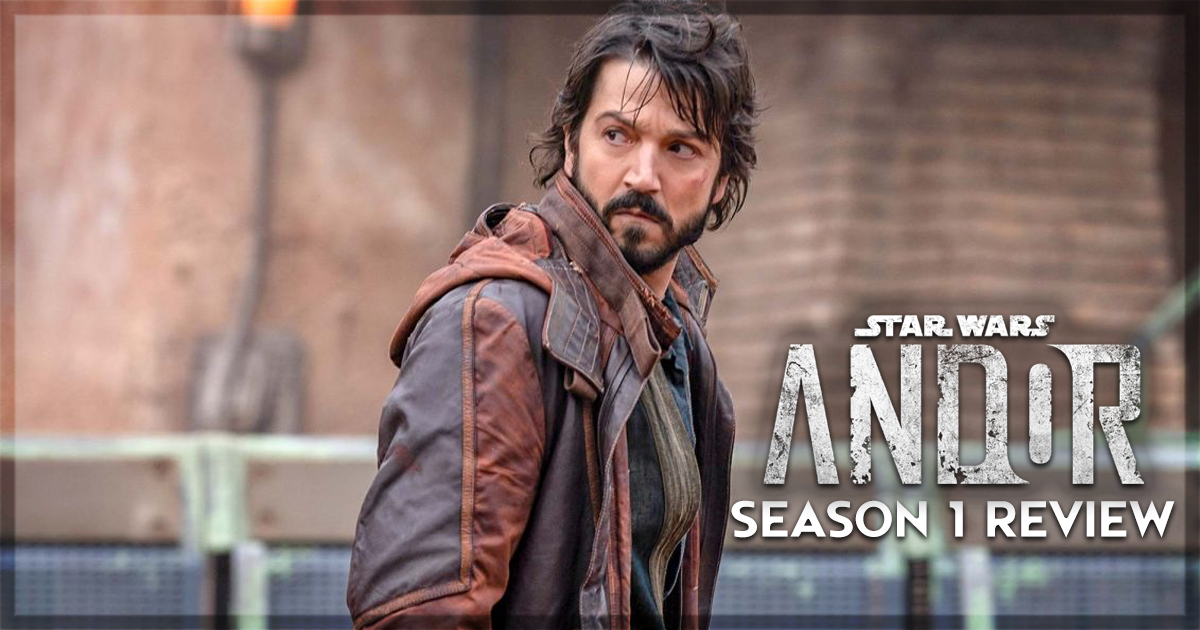After strike-induced delays, the second series of Andor arrives on 22 April 2025, almost two and a half years after the first series first appeared on Disney+. This time, it will deliver its twelve episodes over a might-tighter release window (twelve episodes over four weeks rather than ten). Revisiting Andor’s first series reaffirms its status as one of the best things to come out of the Star Wars franchise in any form.
Cassian Andor (Diego Luna) is a character introduced in Rogue One, a standalone film sitting between the Prequel Trilogy and the Original Trilogy that chronicles the daring, doomed mission by a small cohort of rebels to steal the Death Star plans and transmit them to rebel leadership. While all Star Wars films focus on a struggle between the forces of darkness and light, noble Jedi and authoritarian Empire, Rogue One could easily be one of its most political entries, balancing hope with pragmatism and exploring the (science fiction) realities of toppling an oppressive regime.
Tony Gilroy, one of many writers on Rogue One, continues this exploration as he helms Andor as its showrunner, delving into the character’s backstory and explicitly leading up to the events of the film over its two planned seasons. The first season thus has much ground to cover and largely stays away from Star Wars’ most famous characters and families (while Darth Vader appears in Rogue One, there are no Skywalkers here). But Star Wars, over its decades, has established a vast sandbox of worlds, storytelling styles, and character types in which to play, and Andor fits in perfectly as a tale of ordinary people’s tiny rebellions and hopes in spite of daily oppression. As a result, Andor is the best thing to come out of the Star Wars universe since its original entries, weaving familiar themes into something that feels original, vital, and urgent.
Cassian is not a dyed-in-the-wool Rebel from his beginnings. His mission extends to himself and those he immediately cares about: a missing sister from a childhood on Kenari, his adoptive mother Maarva Andor (Fiona Shaw) who raised him on Ferrix, and his few friends and associates including Bix Caleen (Adria Arjona) with whom he sells black-market goods to make ends meet. The action kicks off when, on a mission to find his sister, he is antagonised by two off-duty Imperial officers, kills one in self-defence, and makes a split-second decision to kill the other and get away. The reigning forces are almost ready to let the case go uninvestigated without a clearer lead but Syril Karn (Kyle Soller), an ambitious low-level inspector, decides to hunt Cassian down outside official orders. With Cassian a wanted man, he ends up in cahoots with Bix’s mysterious dealer contact Luthen (Stellan Skarsgård) and slowly pulled into a world of resistance larger than himself.
Andor is a show that rewards second and third watches as much as it does the first. While Cassian is the titular hero, it is a true ensemble piece, and the connections, plans, and motivations take their natural, unforced time in coming to the fore. There are whole plotlines with which Cassian does not directly interact, namely Mon Mothma’s (Genevieve O’Reilly) covert financing of the Rebellion from her safe Senate seat and Chandrila home. What results is a holistic ecosystem in this tale of revolution and the sense of a world on the cusp of change, driven by (necessary and justified) militant action as much as it is high moral ideas. Of course, this is not delivered until the events of the original trilogy, but Gilroy and his team of co-writers and directors never lapse into inevitability. As far as Cassian, Luthen, Bix, and Syril know, their futures are not yet preordained.
As played by Luna, Cassian is no natural hero or leader. As he states outright several times in the series’ first half, he does not care about any cause, only about getting money and safety for himself. In this first series, he never overtly changes his mind, but his actions – and the actions and words of others – clearly delineate his growing awareness of the Empire’s systemic injustices.
The large supporting cast is equally strong, aided by writing that prevents any character from becoming one-dimensional – even if only appearing briefly. Standouts include Alex Lawthor’s idealistic young rebel Karis Nemik, Denise Gough’s steely Imperial strategic supervisor Dedra Meero, Andy Serkis’ prison floor manager Kino Loy (a second Star Wars appearance for the actor, this time without motion capture), and Kathryn Hunter’s scene-stealing turn as Syril’s conniving mother Eedy.
The production design deftly mixes set, location, and computer generated elements to create a diverse and dynamic world (the planet Aldhani, where a daring mid-season heist is carried out, was shot in the Scottish Highlands). What is most striking, however, are the ways in which Andor portrays the deeply boring, often ridiculous, utterly banal architecture and administration of fascism. The Empire’s foot soldiers and petty officers are not evil supervillains like Palpatine or corrupted Jedi like Anakin Skywalker / Darth Vader, but ordinary people doing terrible things for some paperwork – or at best, a personal vendetta. Perhaps it is the influence of Nicholas Britell’s score, which subtly yet unmistakably comments on the proceedings – the Succession composer is certainly no stranger to the soundtrack of moral bankruptcy, but his music of hope, resistance, and defiance is what carries Andor through its most moving sequences.
While its ending is written and already witnessed, the journey proves that victories are never to be taken for granted. Riveting, through-provoking, and playing in the realm of high tragedy, Andor is a poignant and powerful Star Wars entry, and if the second season can match the first’s heights it will go down as one of the century’s great franchise TV series.
Andor Season 1 is streaming on Disney+. Season 2 of Andor will stream on April 22nd.
Learn more about the show, including how to watch the episodes, at the Disney+ site for the title.
You might also like…

‘Rogue One: A Star Wars Story’ – Disjointed Storytelling Saved by a Stellar Third Act

